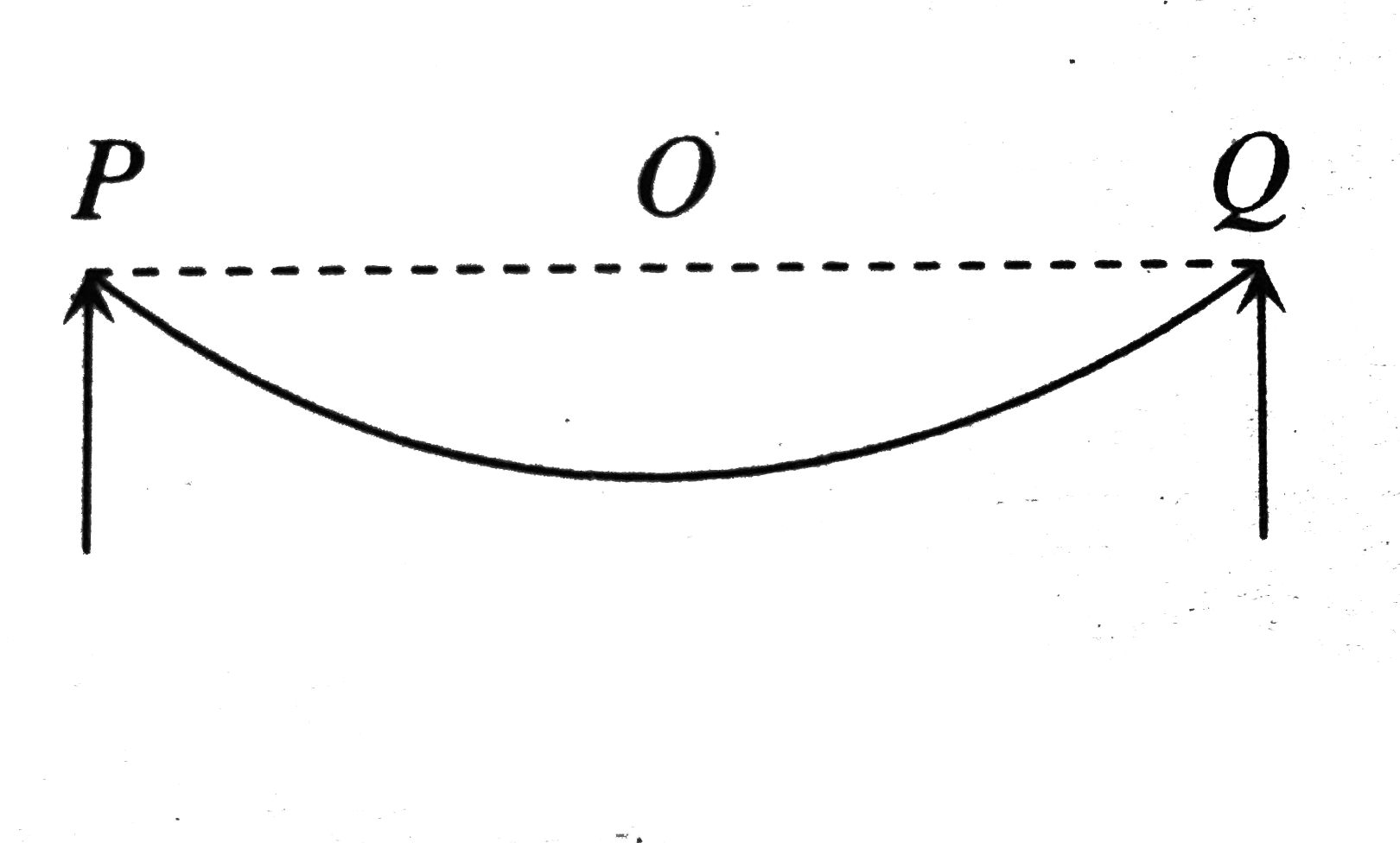
Span of bridge is 2.4 km. At 30∘C a cable along the span sags by 0.5 km. Taking α=12×10−6/∘C, change in length of cable for a change in temperature from 10∘C to 42∘C is
9.9 m
0.099 m
0.99 m
0.4 km
The correct Answer is:C

Span bridge=2400m and bridge sags by 500 m at 30∘ (given)
From Fig. LPRQ=2√12002+5002=2600m
(due to linear expansion)
⇒2600=L0(1+12×10−6×30)
∴ Length of the cable L0=2599m
Now change in Length of cable due to change in temperaure from 10∘C to 42∘C
ΔL=2599×12×10−6×(42−10)=0.99m
Topper's Solved these Questions
- BOOK - CENGAGE PHYSICS ENGLISHCHAPTER - CALORIMETRYEXERCISE - Multiple Correct25videos
CALORIMETRY
- BOOK - CENGAGE PHYSICS ENGLISHCHAPTER - CALORIMETRYEXERCISE - Comprehension30videos
CALORIMETRY
- BOOK - CENGAGE PHYSICS ENGLISHCHAPTER - CALORIMETRYEXERCISE - Subjective25videos
CALORIMETRY
- BOOK - CENGAGE PHYSICS ENGLISHCHAPTER - BASIC MATHEMATICSEXERCISE - Exercise 2.620videos
BASIC MATHEMATICS
- BOOK - CENGAGE PHYSICS ENGLISHCHAPTER - CENTRE OF MASSEXERCISE - INTEGER_TYPE1videos
CENTRE OF MASS
Similar Questions
A second's clock with a iron pendulum is constructed so a to keep correct time at 10∘C. Give αiron=12×10−6 per∘C. What will be the change in the rate when the temperature rises to 25∘C?
View SolutionWater is heated from 0∘C ato 10∘C. How does the density of water change with temperature?
View SolutionA closed pipe of length 1 m emits the fundamental note. What is the percentage change in the frequency when the temperature is changed from 30∘C to 45∘C.
View SolutionCoefficient of thermal expansion of a wire varies with temperature T as α=1.6×10−6T, where T is temperature in degree Celsius. If the length of wire is 10 m at0∘C, what is the change in length of wire (in mm), when its temperature is raised to 25∘C?
View SolutionA steel wire , of uniform area 2mm2 , is heated up to 50∘C and is stretched by tying its ends rigidly . The change in tension , when the temperature falls from 50∘C to 30∘C is (Take Y=2×1011Nm−2,α=1.1×10−5∘C−1)
View SolutionA silver wire has a temperature coefficient of resistivity 4×10−3.∘C−1 and its resistance at 20∘C is 10Ω Neglecting any change in dimensions due to the change in temperature , its resistance at 40∘C is
View SolutionWhat is the percentage change in length of 1m iron rod it its temperature changes by 100∘C.α for iron is 2×10−5/∘C.
View SolutionA carbon and an aluminium wire are connected in series. If the combination has resistance of 30Ω at 30∘C, what is the resistance of each wire at 0∘Cso that resistance of the combination does not change with temperature.(ac=−0.5×10−3/∘C,aA=4×10−3/∘C)
View SolutionConsider a metal scale of length 30cm and an object. The scale is calibrated for temp 20∘C.
(a) What is the actual length of division which is shown as 1cm by scale at 40∘C. Given αs=2×10−5/∘C.
(b) What will be the reading of scale at 40∘C if the actual length of objects is 10cm.
(c ) What will be the actual length of object at 40∘C if is measured length is 10cm.
(d) What is % error in measurement for part (b) and (c).
(e) If the linear expansion coefficient of object is α0=4×10−5 and neglecting the expansion of scale, then answers of (b) and (c) parts.
(f) If α0=4×10−5 and αs=2×10−5 then find answers of (b) and (c) part.View Solution(a) The brass scale of a barometer gives correct reading at 0∘C . Coefficient of linear expansion of brass is 2.0×10−5/∘C . The barometer reads 75cm at 27∘C . What is the atmospheric pressure at 27∘C ?
(b) A barometer reads 75.0cm on a steel scale. The room temperature is 30∘C . The scale is correctly graduated for 0∘C . The coefficient of linear expansion of steel is α=1.2×10−5/∘C and the coefficient of volume expansion of mercury is γ=1.8×10−4/∘C . Find the correct atmospheric pressure.View Solution

